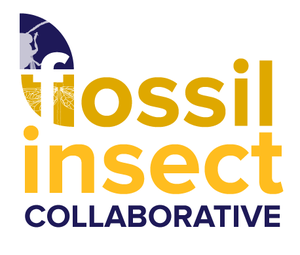Fossil Insect Collaborative: A Deep-Time Approach to Studying Diversification and Response to Environmental Change
Digitization TCN: Fossil Insect Collaborative: A Deep-Time Approach to Studying Diversification and Response to Environmental Change
| Fossil Insect TCN | |
|---|---|
| Quick Links | |
| Project Summary | |
| Current Research | |
| Project Website | |
| Collaborators Map | |
Project Summary
Fossil insects provide a unique deep-time record of ecological and evolutionary response to past environmental changes and therefore are invaluable for understanding the impacts of climate change on the current biodiversity crisis. Given current models of future climate change and the important role that insects play in human society (biodiversity, pests, pollination, vectors of disease) the ability to access these data and make predictions about future insect populations becomes even more urgent. The Fossil Insect Collaborative will make available all the major collections of fossil insect specimens in the United States by creating electronic specimen records consisting of digital images and associated collection data.
The digitized fossil insect collections will be made broadly accessible to the research community, K-16 education, government and industry, the general public, and the media through the project website and a central site integrating all the paleobiological Thematic Collections Networks called iDigPaleo. Mobile apps and activities that allow a wide variety of users to experience and interact directly with the collections data will be developed. This award is made as part of the National Resource for Digitization of Biological Collections through the Advancing Digitization of Biological Collections program and all data resulting from this award will be available through the national resource (https://www.idigbio.org).
Current Research
The fossil insect data are of great importance to understanding insect response to environmental change and patterns of insect biodiversity through time.
These fossils can aid in phylogenetic reconstruction, examinations of the evolution of morphological characteristics, and studies of overall patterns of diversification in deep time.
Digitization of fossil insect collections can support studies related to :
- Pest evolution
- Parasitic insect co-evolution
- Insect pollination
- Insects as vectors of disease
- Gigantism as a result of climate change.
Project Leadership
Project Sponsor: University of Colorado at Boulder
Principal Investigators (PIs): Dena Smith (PI), Talia Karim (Co-PI)
Collaboratoring Award PIs: Sam Heads, University of Illinois Urbana-Champaign; David Grimaldi, American Museum of Natural History; Alton Dooley, Virginia Museum of Natural History; Michael Engel, University of Kansas; Brian Farrell, Harvard University; Susan Butts & Christopher Norris, Yale University; Diane Erwin, University of California, Berkeley
NSF Award Number
Project Website
http://fossilinsects.colorado.edu/
Collaborators Map
https://www.idigbio.org/content/digitization-tcn-fossil-insect-collaborative-collaborator-map
Project Social Media
Facebook: https://www.facebook.com/FossilInsectCollaborativeDigitizationProject
Twitter: @FossilInsectTCN
Project Collaborators
American Museum Natural History
Harvard University
University of California Museum of Paleontology
University of Illinois at Urbana-Champaign, Illinois Natural History Survey
University of Kansas, Center for Research
Virginia Museum of Natural History
Yale University - Peabody Museum
Unfunded participants:
National Museum of Natural History
Florissant Fossil Beds National Monument
iDigBio Summit IV FIC TCN Lightning Talk[1]
iDigPaleo Teacher Workshop at Yale
Eight middle school and high school teachers joined FIC PIs and educators at the Yale Peabody Museum on July 20 and 21, 2015 to work with the iDigPaleo database/web page and develop curricula using iDigPaleo in the classroom.
Presentations (recorded):
coming soon
Presentations: (Powerpoint)
coming soon
Amber Preparation Workshop
TCN members met at the AMNH on the 27th and 28th of February, 2015 to discuss digitization progress and learn how best to prepare and image specimens preserved in amber. AMNH project members David Grimaldi and Paul Nascimbene provided the group with an overview of amber and insect inclusions, and also gave tours of the collection, lab space, and equipment needed to properly prepare and preserve amber.
